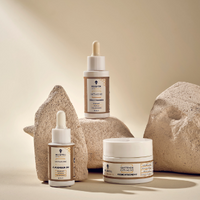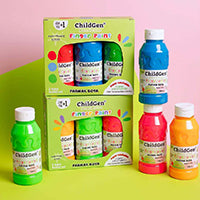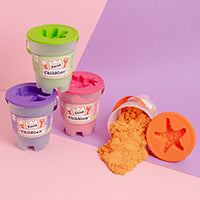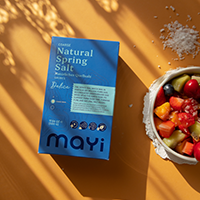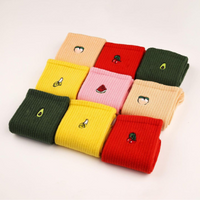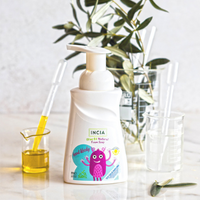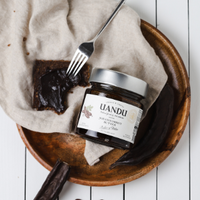Omega-3: The effects of fatty acids
Omega-3 fatty acids are said to have anti-inflammatory properties. It is well known that omega-3 can have miraculous effects on the body. This has also been examined and confirmed in studies. Omega-3 is found in foods like fish, seaweed, nuts, seeds, hemp, and certain oils. But it's even easier!
Our unique products from the EasyFishoil series such as EasyFishoil-Omega 3 with vitamin D3- 30 pieces , EasyFishoil Multi-Omega 3 with multivitamins- 30 pieces and EasyFishoil Q-Omega 3 with choline, vitamin B6, B12 and folic acid- 30 pieces are in Unlike omega 3 products with capsules made as soft jelly and can be chewed and so easily ingested.
But what are omega-3 fatty acids?
Omega-3 fatty acids are very important for the body as they cannot be manufactured by the human body. There are many health benefits of omega-3 supplementation. They are polyunsaturated fatty acids.
There are 3 different ways like ALA (Alpha Linolenic Acid) , DHA (docosahexaenoic acid) and EPA (eicosapentaenoic acid). The last two are defined in more detail later in the text. The occurrence of these forms is at ALA in plants and at DHA and EPA mostly in animal foods.
If you don't eat a lot of foods like fish, flaxseed oil, walnut oil and rapeseed oil, you should take dietary supplements because this essential fatty acid has many health benefits.
The advantages of a product in this form are:
- the consumption is easier in contrast to a capsule because the children and the elderly when taking capsules may have difficulty swallowing.
- Transportation is very practical . Comfortable in the Take it with you and easily consume it anywhere. It's that easy!
- Suitable for sensitive stomachs as capsules can cause pain and the gel form is a milder alternative.
- Capsules must be taken with water, whereas the Soft Jellys can be consumed directly without water and dissolve by sucking or chewing. This is a great benefit for those who have it practical like.

Why is a balance between omega-3 and omega-6 so important?
The Omega Balance
The optimal ratio of omega-3 and omega-6 has always been an important topic in this context. Let's first look at what these fatty acids are and what we need them for in the body.
Omega-3 and Omega-6 are essential fatty acids for the human body and should be present in a certain ratio. These are called polyunsaturated fats because they have many double bonds. They must always be obtained from the diet as they cannot be produced by the human body .
The ratio is reported in many places to be around 1, but the ratio in the western diet is closer to 15/1-16/7/1. This means that the diet here is low in omega-3 fatty acids and higher in omega-6 fatty acids.
It is very important to reduce the omega-3 polyunsaturated fatty acids and the high ratio of omega-6 and omega-3, because these lead to different Diseases such as cardiovascular diseases, autoimmune diseases and inflammation. Scientists believe that omega-3 fatty acids are anti-inflammatory and omega-6 fatty acids are pro-inflammatory.
What are EPA and DHA?
EPA (eicosapentaenoic acid)
Eicosapentaenoic acid (EPA) is formed from alpha-linolenic acid in the healthy human organism. EPA is a long-chain, polyunsaturated fatty acid that belongs to the group of omega-3 fatty acids. The starting fatty acid for omega-3 fatty acids in general is α-linolenic acid (ALA). ALA is converted into the biologically active omega-3 fatty acid EPA, which in turn is converted into the omega-3 fatty acid DHA. It is also important for children and adults and therefore needs ALA to become active in the body.
DHA (docosahexaenoic acid)
DHA is a long-chain, polyunsaturated fatty acid that belongs to the group of omega-3 fatty acids. Here, too, ALA is required for biosynthesis in the healthy human organism. The eicosapentaenoic acid formed from ALA is used for the conversion. Fetal DHA levels are only determined by the maternal diet as the body is unable to convert ALA to DHA. However, the intake of high-fat sea fish for all age groups is still very important, since the conversion takes place only slightly.

Omega 3 intake during pregnancy
The Omega-3 intake during the pregnancy reduces the risk of premature birth and can increase the length of pregnancy and birth weight. Blood flow to the placenta is improved and can stimulate brain development Babies support.
In a supervised study in the New England Journal of Medicine, high-dose treatment with long-chain unsaturated fish oils EPA and DHA was given to pregnant women in the late twenties weeks of pregnancy carried out. It showed that children in the first five years attended less frequently asthma get sick than the average.
A current study explains studies on the effects of anti-inflammatory omega-3 on pregnant women. There is an 11% lower risk with omega-3 intake having a premature birth. There was also a lower risk of perinatal death and a lower likelihood of low birth weight. When treated with anti-inflammatory omega-3, the tendency to depression during pregnancy is less.

Omega-3 does not always mean omega-3
The main anti-inflammatory Omega-3 fatty acids are eicosapentaenoic acid (EPA), docosahexaenoic acid (DHA) and alpha-linolenic acid (ALA). Omega-3 fatty acids cannot be produced by the body itself and must be supplied through the diet with food. There is a distinction between chemical structures and natural sources of omega-3.
The plant-based omega-3 fatty acid variety ALA (alpha-linolenic acid) is abundant in seeds and walnuts. In particular, vegetable oils such as linseed oil, chia oil, walnut oil and canola oil are considered to be rich in omega-3.
There is also the type of marine omega-3 fatty acids called EPA (eicosapentaenoic acid) and DHA (docosahexaenoic acid). These are particularly found in sea products such as oily cold-water fish, krill and algae.
Studies have shown that plant-based omega-3 ALA is less effective than omega-3 fatty acids EPA and DHA. ALA can be converted into omega-3 fatty acids EPA and DHA, but this is subject to various factors such as age, gender, weight, etc. An omega-3 deficiency cannot be successfully treated with this. They can be taken in addition but not instead !
Our products the EasyFishoil series contain a high nutrient content and omega-3 fatty acids DHA and EPA, which have particularly good effects on health. The products are also due to the special Soft Jelly liquid at 36 degrees body temperature and can be easily absorbed by the body.
The omega-3 fatty acids EPA and DHA have beneficial effects on human health
- They contribute to normal heart function
It has long been about the meaning of Omega-3 for heart health spoken. Many new studies confirm the positive effect on lowering blood lipid levels, reducing inflammation and lowering blood pressure. In addition, the anti-inflammatory omega-3 improves the flow properties of the blood, thus reducing the risk of cardiovascular disease.
- Brain health is supported
Omega-3 is also for children particularly effective because it is at the children's brain development supporting effect. Cardiovascular diseases and cellular aging can lead to memory loss and even dementia. The scientists in Ohio/USA found that the anti-inflammatory omega-3 protects the genetic information in the cells.
- Inflammation is relieved
Omega-3 fatty acids counteract inflammation by Bring the hormone system into balance, regulate the metabolism and strengthen the immune system . The risk of developing diseases such as multiple sclerosis, high blood pressure, diabetes, etc. is reduced and existing inflammatory processes are improved or regenerate completely.
- Supports your eye health
age-related eye diseases can be counteracted with the anti-inflammatory omega-3 fatty acid. According to a study from Greece and the USA, supplementation with omega-3 increases vision and can halt or at least slow down degeneration.
- Omega-3 fatty acids also improve the child's vision during and after pregnancy
Taking DHA improves the development of the eyes and brain in the fetus and also helps breastfed infants to develop better. The daily dose should be at least 200 mg.

How Much Omega-3 Should You Take Per Day? What is the recommended daily dose?
- A daily dose of 1-2 Soft Jellys after a meal is recommended for children aged 3-10 years. A dose of 2 Soft Jellys after a meal is recommended for children over 11 years of age and for adults.
Häufig gestellte Fragen
Was sind Omega-3-Fettsäuren und in welchen Lebensmitteln kommen sie vor?
Was sind Omega-3-Fettsäuren? Warum brauchen wir es?
Was ist Fischöl?
Aus welchem Fisch wird Fischöl gewonnen?





